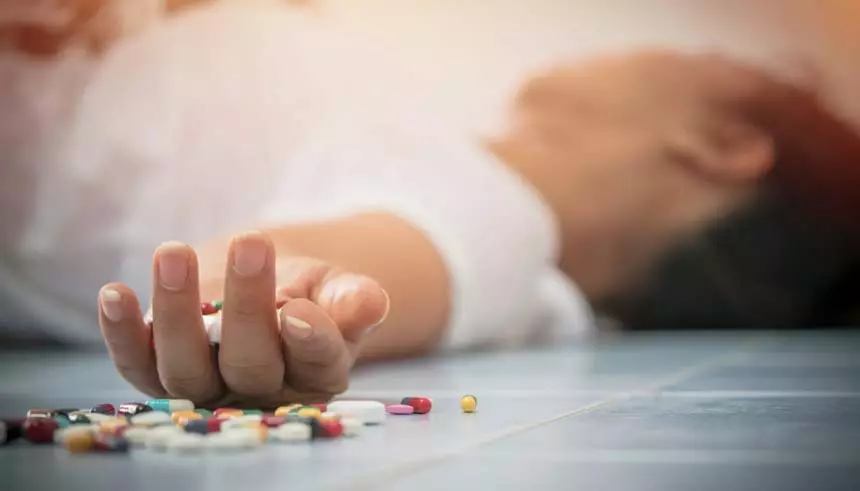What is Oxycodone?
Table of Contents
- What is Oxycodone?
- Understanding Opioid and Opiate Addiction
- Opioid Addiction Risk Factors
- Oxycodone Effects
- Oxycodone Withdrawal Symptoms
- Timeline of Opioid Withdrawal Symptoms
- Continued Health Complications
- Signs and Symptoms of Opioid Addiction
- Treatment Options for Opiate Withdrawal
- Medical Detox for Opioid Withdrawal Syndrome
- Inpatient Treatment for Opioid Withdrawal Syndrome
- Outpatient Treatment for Opioid Withdrawal Syndrome
- The Use of Therapy for Rehabilitation
- Steps to Prevent Opioid Addiction
- Find Oxycodone Treatment Options Now!
Oxycodone is the active ingredient in OxyContin, a prescription painkiller that modifies pain perception, as well as produces a euphoric feeling. These effects are caused by the drug’s altering of levels of dopamine in the brain. However, the effects and impact of this painkiller are not all positive.
When the brain grows accustomed to the constant presence of Oxycodone, the brain might not function so well without it, leading to withdrawal and addiction. But first, to understand oxycodone withdrawal, we need to look into exactly what Opioid and Opiate addiction means, how it can begin, and the multiple risk factors associated with it.
Keep reading to find out more about opioid dependence and how to get the help you need to get through Oxycodone withdrawal!
Understanding Opioid and Opiate Addiction
Opioids are a class of drugs that are prescribed to treat moderate to severe pain. Opioids and Opiates are often used interchangeably, but they are different. Opiates refer to natural opioids like heroin, morphine, and codeine.
Opioids refer to all-natural, semisynthetic, and synthetic opioids. Prescription opioids include; Vicodin, Dilaudid, and Oxycontin (oxycodone). While prescribing opioids was supposed to be a very useful way to treat pain, this has instead caused a crisis that is being labeled the ‘Opioid Epidemic’ in the United States.
According to the U.S. Department of Health and Human Services, 130 people a day die from opioid-related drug overdoses. The National Institute of Drug Abuse says, approximately 2.1 million people in the United States and between 26.4 and 36 million people worldwide abuse opioids.
Opioid Addiction Risk Factors
There are different factors that contribute to the risk of opioid/opiate addiction, from genetic, psychological, and environmental factors to the length of time of taking the drug. Opioids are prescribed by medical professionals when a person is experiencing moderately severe pain.
Whether that be from surgery, a broken ankle, long-term chronic problems, and so on. Opioids attach to opioid receptors in the brain, triggering the release of endorphins and creating a sense of well-being and pleasure. When the opioid dose wears off, many people will want that feeling back; this serves as the gateway toward physical dependence and addiction.
Opioids tend to be more addictive when using methods of administration different from what was prescribed, like crushing a pill so it can be snorted or injected, which is a life-threatening practice that can lead to accidental overdose and death.
Researchers have also found when taking opioid medications for more than a few days, you are at an increased risk of long-term use, leading to an increase in the risk of becoming physically dependent on and addicted to these drugs. Other known risk factors include:
- Poverty and unemployment.
- Family and personal history of substance abuse.
- Young age.
- Unstable home, work, or school environment.
- History of criminal activity or legal problems.
- Regular contact with high-risk people or high-risk environments.
- History of severe depression, anxiety, or other mental health conditions.
- Prior drug or alcohol rehabilitation.
Although many drugs fall under the Opioid category, in this guide, we want to focus on oxycodone. Specifically, its effects, the impact of withdrawal symptoms, complications it can lead to, and the treatment options to help fight and prevent addiction.
Oxycodone Effects
The powerful ingredient oxycodone is found in painkillers like OxyContin, Percocet, and Roxicodone. It is one of the most commonly abused prescription drugs in the United States. The effects when taking this drug include:
- Happiness
- Reduced anxiety
- Confidence
- Relaxation
- Drowsiness
- Calmness
- Dizziness
- Euphoria
However, the effects of Oxycodone are not always positive. There are negative side effects that need medical attention right away like blood in urine, severe constipation and vomiting, fainting, and so on.
There are also side effects that are common to come along with the prescription and do not need medical attention. However, these are often still unpleasant, including difficulty having a bowel movement, drowsiness, and lack or loss of strength.
Oxycodone Withdrawal Symptoms

Opioid medication with an ingredient like oxycodone, when consumed over a long period of time, will cause your body to start to become desensitized to the effects. In other words, you will build a tolerance to the drug.
This means that your body will need more and more of the same drug to achieve the desired euphoric and pain-free feeling. This is when addiction becomes prevalent. Prolonged use of the drug changes the way nerve receptors work in the brain, leading to dependency to function.
If you stop taking the medication and you begin to experience withdrawal symptoms of oxycodone, it is a strong indication of a physical dependency on the substance. Withdrawal symptoms are the body’s reaction to the absence of the drug and it can be extremely painful and unpleasant, risking those who abuse the drug to fall back into the pattern of using.
Timeline of Opioid Withdrawal Symptoms
There is the chance of you going through different withdrawal stages during the process of detox that is also dependent on what opioid is being taken. Detox is the physiological or medicinal removal of toxic substances from a living organism, that is mainly carried out by the liver.
How long Oxycodone withdrawal lasts depends on different factors including; how severe the addiction is, overall health, how often the opiate is used, and the type of opiate used. When it comes to the withdrawal process for drugs with Oxycodone, it’s divided into two distinct phases: initial symptoms and later symptoms.
When it comes to understanding the side effects of stopping drug use and how to treat opioid dependence and addiction, we will need to take an in-depth look at the clinical opioid withdrawal scale and timeline.
Initial Symptoms
Withdrawal symptoms may begin around four to eight hours after the last dose of an abused drug, although this can vary from person to person depending on a variety of different factors. These include those that are environmental, genetic, or biological. Each can impact how a person handles withdrawal symptoms.
The drug will leave the system about 12-24 hours after the last dose, but since it has a half-life of four hours, withdrawal symptoms can appear in that four to eight-hour range. Here are the common symptoms of Oxycodone withdrawal you may experience in the initial stage:
- Mood changes, like anxiety, irritation, restlessness, or agitation.
- Sleep changes like insomnia.
- Physical changes, like muscle aches and cramps, or yawning.
- Other withdrawal symptoms that are similar to a cold or flu, like a runny nose, sweating, chills, fever, and congestion.
Early symptoms of withdrawal will feel similar to having the flu. Many users who do not even realize they have a substance abuse problem with oxycodone tend to think they actually have the flu, not realizing how similar its symptoms are to Oxycodone withdrawal symptoms.
Later Symptoms
Later symptoms are expected to appear a full 24 hours after the initial symptoms. However, the most severe signs of withdrawal can take up to three days to subside, while less acute symptoms typically last another week or two. Later physical symptoms may include:
- Nausea and vomiting
- Diarrhea
- Abdominal cramps
- Reduced appetite
- Dilated pupils
- Blurry vision
- Shivering or goosebumps
- Rapid heartbeat
- High blood pressure
While rarely life-threatening, the more intense withdrawal symptoms associated with oxycodone – and opioids in general – can be extremely uncomfortable, and will most often require professional addiction treatment services in order to be properly managed.
Continued Health Complications
Beyond just the initial and later symptoms of oxycodone withdrawal, there are many other health complications this type of substance use disorder can lead to. One of the biggest health concerns with an oxycodone addiction is the risk of a possible overdose.
It can often be accidental, as many will take the prescription drug regularly and mix the painkiller with alcohol or other drugs. According to the National Institute on Drug Abuse, opioid-involved overdose deaths rose from 21,088 in 2010 to 47,600 in 2017 and remained steady in 2018 with 46,802 deaths.
This was followed by a significant increase in 2019 to 49,860 overdose deaths. Oxycodone addiction can also result in serious, chronic health problems. Oxycodone is a toxin, meaning the body will have difficulty processing it in large amounts regularly.
In fact, this can cause liver and kidney function to fail, leading to diseases. Since oxycodone is a sedative, it can have an adverse effect on the respiratory system as well, causing difficulty breathing or even completely respiratory depression. Other chronic issues like heart disease and cardiac problems may also occur.
Health complications can continue the longer the drug is taken and abused, causing life-threatening diseases that go beyond just the initial and later symptoms of withdrawal. Luckily, while withdrawal signs can feel terrible, it is not often life-threatening.
Signs and Symptoms of Opioid Addiction

Are you having trouble coming to terms with opioid addiction or have a loved one that you believe may be addicted to opioids? We are here to help with the signs and symptoms of addiction you need to watch out for.
Opioid use disorder is a medical condition, defined as not being able to stop using opioids and it having an effect on your life and behaviors. A doctor can diagnose someone with opioid use disorder.
It’s important to note, that someone struggling with the disorder may not even display symptoms right away. However, according to the Diagnostic and Statistical Manual of Mental Disorders (DSM-5) there are some common signs to watch out for:
- The inability to control opioid use
- Uncontrollable cravings
- Drowsiness and changes in sleep habits
- Extreme weight loss
- Frequent flu-like symptoms
- Decreased libido
- Lack of hygiene
- Changes in exercise habits
- Isolation from family or friends
- New financial difficulties
Treatment Options for Opiate Withdrawal
If you are suffering from addiction or symptoms of withdrawal there are many treatment services available to help you overcome your drug abuse. When it comes to Oxycodone addiction, there is withdrawal help readily available and steps to take to prevent addiction.
When overcoming an opioid use disorder, the first step in the addiction treatment process will typically be a medically-supervised detox program. The road to recovery can be long and difficult, but it is not impossible.
Another treatment option is rehab. There are inpatient and outpatient programs all across the Nation ready to help. Usually, an inpatient rehab that offers medical detox would be the best choice for oxycodone users.
If you are unsure of what level of care is best for you or your loved one, speaking with a healthcare professional or addiction specialist, such as a Find Addiction Rehabs representative, can help you narrow down these options.
Medical Detox for Opioid Withdrawal Syndrome

Medical detox programs are a key element in treating several types of addiction and are particularly effective for treating opioid withdrawal. Participating in an oxycodone detox program can help manage symptoms of withdrawal, and may even prevent these side effects from occurring.
While recovering at an oxycodone detox center, individuals will be gradually weaned off of their drug use while under the constant supervision of a team of certified healthcare professionals. This is a key substance use treatment element, as attempting to detox by oneself can be dangerous, and often leads to relapse.
The oxycodone detox process may also include medication-assisted treatment, in which individuals are administered controlled addiction medicine that can help prevent drug cravings and further decrease their risk of relapse.
Oxycodone Pharmacological Treatment Options
Buprenorphine medicines are usually one of the first addiction medicines used to help manage withdrawal and recovery. This is an opioid partial agonist, meaning it produces effects of euphoria. However, these effects are weaker than the full effects oxycodone can give.
Buprenorphine’s opioid effects increase with each dose until at moderate doses when they level off. It’s called the “ceiling effect” which helps lower the risk of misuse and dependency. The FDA has approved the following buprenorphine products:
- Bunavail (buprenorphine and naloxone) buccal film
- Suboxone (buprenorphine and naloxone) film
- Zubsolv (buprenorphine and naloxone) sublingual tablets
- Buprenorphine-containing transmucosal products for opioid dependency
Methadone is another opioid that works by changing how the brain and nervous system respond to pain. It helps to lessen the painful symptoms that come from opiate withdrawal but blocks the euphoric, addictive effects of opiate drugs.
It is usually recommended when using methadone for people to also participate in a comprehensive medication-assisted treatment program that offers counseling and a strong support system.
Inpatient Treatment for Opioid Withdrawal Syndrome
For those who are experiencing opioid withdrawal, seeking out inpatient treatment centers may be a better recovery option. Residential and inpatient treatment allows these individuals to live at their rehab facility throughout the duration of their treatment process.
This will help them to leave behind the stress and temptations of the external world, allowing them to focus solely on recovery. This will significantly reduce their risk of relapse; however, this may also require significant social isolation and a larger financial commitment.
Outpatient Treatment for Opioid Withdrawal Syndrome
For those who require a more financial and time-flexible treatment option, outpatient rehab may be a better choice for their recovery needs. While more lenient, this level of care will require a significant amount of self-control and may be best for those with a reliable support system to help keep them on track with their recovery.
With outpatient treatment, a recovering person will typically participate in behavioral therapies and support groups several times a week at their specific rehab center. Unlike inpatient treatment, they will not be required to live at the facility while recovering, allowing them to continue to manage their home, work, and school responsibilities.
The Use of Therapy for Rehabilitation
 It is known that the first four to five days of the Oxycodone withdrawal are the hardest. After that, it’s all mental and working to stay clean. Rehab centers can help accomplish this with support groups and extensive emotional support.
It is known that the first four to five days of the Oxycodone withdrawal are the hardest. After that, it’s all mental and working to stay clean. Rehab centers can help accomplish this with support groups and extensive emotional support.
According to the Substance Abuse and Mental Health Services Administration (SAMSHA), effective addiction treatment will include recovery options designed to help those struggling with co-occurring mental health disorders.
By providing therapeutic services, a person will be able to address and overcome both their addiction and its underlying causes. This may include their participation in various forms of therapy, including:
Steps to Prevent Opioid Addiction
If you feel you or a loved one is not yet at the point of ‘addiction’ or being diagnosed with opioid use disorder, it is important to take steps to prevent it from happening. Opioids are safest when taken for three or a few days to manage acute pain.
The longer on an opioid the more you are at risk of addiction. If you are being prescribed a medication that has Oxycodone or other addictive pain ingredients, talk to your doctor on how you can be prescribed the lowest dose possible for the shortest amount of time needed.
If you are living with chronic pain, it is not recommended to use opioids as a long-term treatment option. There are many other treatments available, like less addictive pain medications and therapy. You can help prevent addiction by safeguarding opioid medications when using them and disposing of them properly.
Contact local law enforcement on how to properly get rid of medicine and for other drug safety communication services. This is called a takeback program, and they should be happy to help fight the painkiller addiction that has become an epidemic across the nation.
Find Oxycodone Treatment Options Now!
While opioid withdrawal and the spread of addiction across the U.S. can seem scary, hope is not lost. There are ways to battle the addiction, the withdrawals, and the impact opioids can leave behind. It is all about taking that first step and acknowledging the problem so that you can finally start getting help and treatment.
This epidemic can be beaten, and it starts with you. Just by calling our 24/7 hotline, a recovery representative can help you take the first step to recovery, where you can finally become a healthier, happier, and opioid-free you, today!
Charles F. has been an active part of the Florida recovery community for over 5 years. He began as a behavioral health technician at an addiction treatment facility in Ocala, Florida and has since begun training as a Licensed Addiction and Chemical Dependency counselor in Boca Raton. Charles’ passion involves the promotion of recovery and helping spread the hope of recovery to as many readers as possible!


